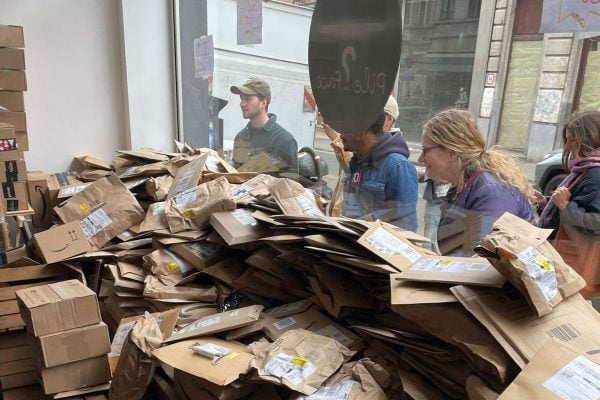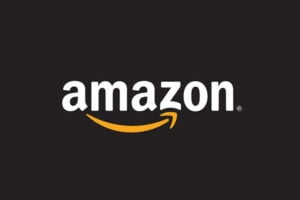In answers to a US Hearing of the Subcommittee on Antitrust, Commercial, and Administrative Law, Committee on the Judiciary, Entitled “Online Platforms and Market Power, Part 2: Innovation and Entrepreneurship” House panel investigating four Big Tech firms, Amazon has answered 158 questions around the shape of their business. In doing so they have revealed the shape of the Amazon US marketplace in numbers. The following is largely Amazon’s verbatims answer only lightly edited for context:
How many sellers trade on the Amazon US marketplace?
Third party sellers may choose the Amazon selling plan that best meets their needs, and may switch between Individual and Professional plans as they see fit so the number of each type of account is constantly changing. As of the 29th of September, 2019, there were 898,000 merchants trading on the Amazon US marketplace.
- Approximately 384,000 active individual seller accounts in the US and
- Approximately 514,000 active professional seller accounts in the US
If you are the only seller of a product will you automatically win the Buy Box?
Since Amazon seeks to highlight only offers that it is confident will present a great experience for its customers, there may be circumstances in which a third party offer would be ineligible to be displayed as the Featured Offer. For example, an offer would be ineligible if the third party has a history of providing a poor customer experience or presents a high risk of fraud or abuse. Similarly, an offer at a price that is uncompetitive, for a product that is not available or cannot ship to a customer’s location, or for a product about which there may be product-quality or customer-experience concerns may be ineligible to be displayed as the Featured Offer.
If an Amazon retail offer is out of stock with no outstanding purchase orders and that same product is available at the same or a lower price from a Prime-eligible seller with a high-performance rating, then the Amazon retail offer would not be the Featured Offer.
Why are products suppressed or removed?
Suppressing a product from shopping results is different from removing the listing from Amazon’s store, although Amazon uses both processes to protect the experience of its customers and prevent fraud and abuse in its store. Suppressing a product from shopping results has the result of hiding the listing from search and personalization, yet the product remains buyable in Amazon’s store. Amazon may suppress a listing from shopping results when a listing risks impairing the customer shopping experience for reasons such as missing or incorrect information. Listings may be un-suppressed and reappear in shopping results when flaws are corrected. Sellers are able to run suppression reports and correct or manage suppressed listings through the “Manage Inventory” tab in Seller Central. For the vast majority of Amazon sellers, simple errors like missing images and or category fields can be updated in as little as 24–48 hours. In contrast, Amazon may remove or “de-list” a product from its store where the product is illegal, prohibited by Amazon’s policies, or otherwise presents a risk of fraud and abuse. Once removed from Amazon’s store, such products cannot be purchased by Amazon’s customers.
How many Amazon Prime members are there?
Amazon Prime has over 100 million paid members worldwide.
How does using FBA impact search results?
Selling partners who choose FBA enjoy high-quality fulfillment services that customers want, including fulfillment and delivery speed, Prime eligibility, and seller performance. The featured offer is based on factors affecting customer experience, and FBA generally provides a better and more reliable experience for Amazon’s customers than fulfillment through other means; accordingly, that difference may be reflected in the offer that is featured.
How many Seller Fulfilled Prime merchants are there on the Amazon US marketplace?
More than 25,000 seller partner accounts are enrolled in Seller Fulfilled Prime.
Amazon stopped accepting new registrations for Seller Fulfilled Prime on February 18, 2019. Amazon is focused on working with existing sellers in the program to improve the experience of their customers and to meet Prime customer standards for delivery speed and reliability.
How does Amazon fund discounts on the prices offered by merchants?
As part of its efforts to ensure that Amazon’s customers pay competitive prices for products offered in Amazon’s store, Amazon may on occasion choose to fund a discount to its customers when the prices set by third party sellers are higher than the prices offered by other stores for the same product. In these instances, third party sellers receive payment for the order and pay referral fees based on the item price they set. Amazon pays for the full discount, which appears as a credit to Amazon’s customers. Under the discounts provided by the Amazon program, discounts do not exceed Amazon’s referral fee on the item being discounted.
How many brands are enrolled in Amazon Brand Registry?
200,000 brands are enrolled in the Amazon Brand Registry.
In 2019, Amazon has already blocked over 400% more listings suspected of violating intellectual property rights than during the same period in 2018. Brands are finding and reporting 99% fewer suspected infringements than before the launch of Brand Registry.
There are only seven authorized resellers of new Apple products
Amazon welcomes as many authorized resellers of Apple products as Apple will approve to sell in Amazon’s store. As of August 2019, Apple has authorized seven resellers of new Apple products. Through Amazon’s Renewed program, hundreds of other resellers of Apple products meet the criteria to list and sell refurbished Apple products in Amazon’s store.
How many private brand products do Amazon sell?
Amazon currently offers approximately 158,000 private brand products (some of which have additional variations, such as color and size) across 45 brands in the Amazon store in addition to some private brand products sold by Amazon Fresh, its online grocery store available in select metro areas.
Amazon offers private brand products in highly competitive categories and Amazon’s total sales are small as compared to national and other branded and generic products in Amazon’s store, lagging far behind the percentage of sales that rival private brand retailers have achieved. Across Amazon’s business lines, the percentage of sales in Amazon’s stores that its private brand products account for are in the low single digits in North America.
Editorial Recommendations of Amazon private brand products
Editorial Recommendations brings product-related content onto Amazon to help customers research and discover products they might be interested in. For each month since July 2018, the number of Amazon private brand products featured within Editorial Recommendations has been less than 2.5%.
Sponsored Products and Sponsored Brands impressions of Amazon private brand products
In each month since July 2018, only 2–3% of space eligible for Sponsored Products and Sponsored Brands impressions has highlighted Amazon’s private brand products. Amazon’s display and video programs only show merchandising for private brand products on Amazon when no third party ad is available.











One Response
I got accepted onto seller fulfilled prime last week… so the bit about not taking more sellers on isn’t true anymore